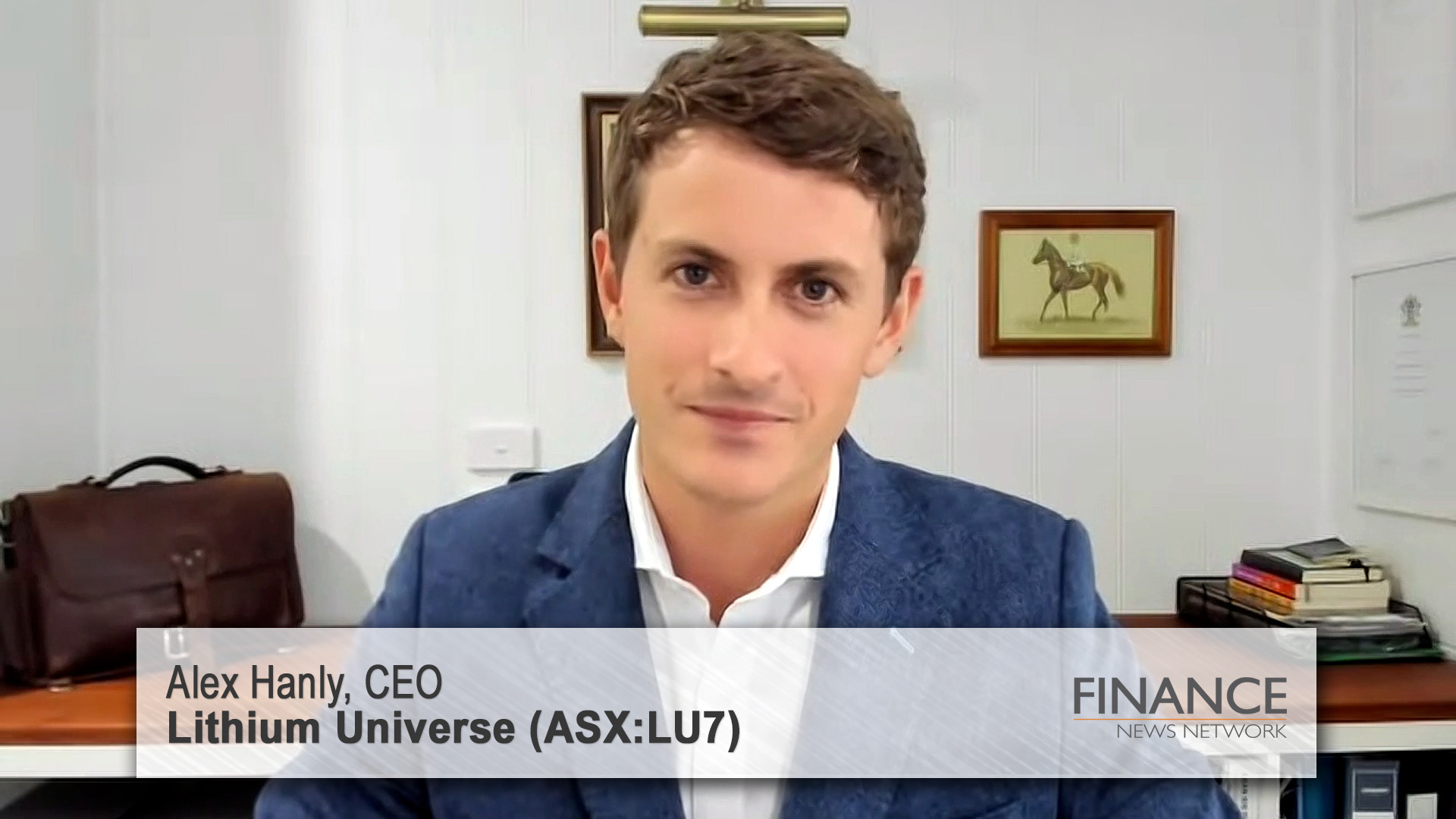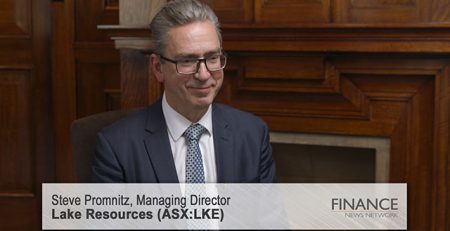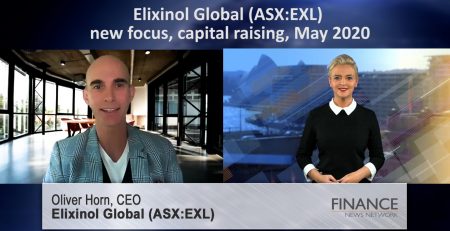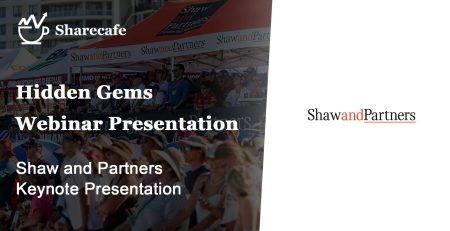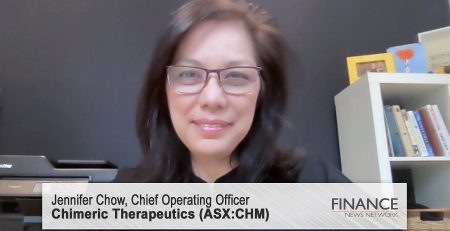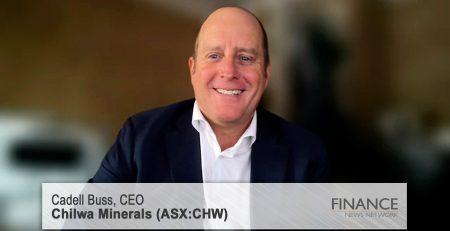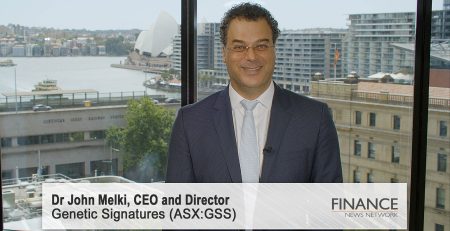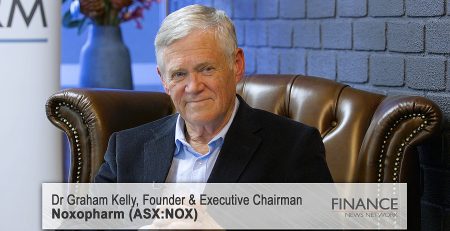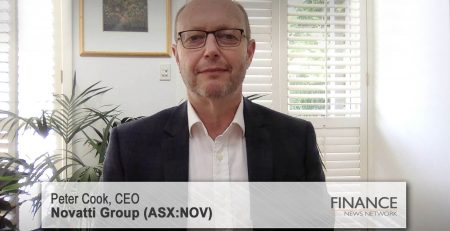Building North America’s lithium future
Lithium Universe Limited (ASX:LU7) CEO Alex Hanly discusses progress towards construction of a lithium refinery.
Paul Sanger: I'm Paul Sanger for the Finance News Network, and today I'm talking with Lithium Universe (ASX:LU7), and they have a market cap around 10 million. Lithium Universe is in the process of constructing a project in Quebec to address the lithium conversion capacity gap in the North American market. We welcome back Lithium Universe CEO, Alex Hanly. Alex, welcome.
Alex Hanly: Good day, Paul. Thanks for having me.
Paul Sanger: Alex, let's start off with a bit of macro to start with. The East Coast of North America is about to witness a substantial surge in battery manufacturing. Can you walk us through some of the finer details of this growth plan?
Alex Hanly: Yeah, that's right, Paul. So yeah, the Eastern Seaboard of North America will probably find itself home to around 25 to 30, either gigafactories or cathode facilities by the end of 2028. So, that's a huge uptick in, I suppose, demand within the North American climate. In addition to that, the LCE or lithium carbon equivalent that's actually required to supply these gigafactories or cathode facilities, is upwards of around 800,000 tonnes of LCE-equivalent per annum. Now, as a bit of a perspective, the total global output for LCE in 2022 was only a touch over 760,000 tonnes per annum. So, we're talking about a doubling of the demand, just in North America alone.
Paul Sanger: It's been well-documented, Alex, that, from a lot of politicians in the US, is looking for localised sources of these products that go into EV cars. And at the moment North America, in particular, is reliant on other geographies to get these components to build EV batches, correct?
Alex Hanly: Yeah, exactly. So 95% of the world's spodumene is currently processed in China. So, any spodumene that is mined in North America, South America, is having to go all the way to China to get processed through their converters or refineries before making its way back into the North American ecosystem.
Now, there's a huge push in North America, as you alluded to. Both Canada and the US are pushing for, let's say, an American-made value chain, all the way from mine, through processing, onto conversion, and then finally with the gigafactories. And we've obviously, I've just highlighted the huge supply deficit in North America that's planned, of around 800,000 tonnes per annum. Now, the conversion capacity currently planned in North America, is just a touch over 100,000 tonnes per annum. So, there's a huge conversion deficit there within North America.
Paul Sanger: Okay, so let's now talk about Lithium Universe and your core strategy to help bridge this gap by leveraging a proven track record in constructing lithium converters.
Alex Hanly: Paul, we've previously introduced the company on your platform before. The Lithium Dream Team, we call them. It's led by Iggy Tan, of course, he's our chairman. Iggy, obviously, he built Galaxy Resources (ASX:GXY) and the assets that were in there and made the company, Mt Cattlin and the Jiangsu Lithium Carbonate plant in China.
We've also got Jingyuan Liu. Jingyuan is considered to be the international downstream expert and still remains to be, I suppose, a major contributor and consultant to the major conglomerates we know today. He built the Jiangsu plant alongside Iggy, as well as John Loxton, ex-Hatch, as well as Terry Stark, who was former GM of operations for Galaxy.
Also on the team we've got Pat Scallon. Pat was a former GM of operations for Talison, for the Greenbushes mine, for 25 years. So we've obviously got the pedigree and what we're trying to do here, is bring that expertise into North America and build the next conversion or one of the first conversion operations here in North America. So, we've got the team and experience and track record to do so, Paul.
Paul Sanger: Now, today you've just announced to the market that you secured some correct prime industrial land for your proposed lithium refinery. What was all the process of why you decided this piece of land was the right fit for Lithium Universe, and who helped you to form this decision?
Alex Hanly: Yeah, that's right. So, we've employed and partnered with Hatch out of the Montreal and the Brisbane office here in Australia, to help us first do a location study as well as process flow sheets and design requirements, preliminary design requirements. Now, our location study took into account four main areas, Northern Quebec, which is along the Trans-Taiga region, near a lot of the discoveries with Patriot and Winston Resources.
We also had a look at the Abitibi region, which is home to a lot of the historic gold mining activities within Quebec. And then on the eastern side we looked at Saguenay, which is one of an up-and-coming areas within Quebec.
The fourth area was the Montreal metropolitan area, was situated between… Well along the St Lawrence, so situated between Quebec City and Montreal. It became quickly our favourite, obviously for a number of reasons. The utilities, we've got natural gas, we've got hydroelectricity. In terms of logistics, we've got highway access, we've got rail going straight through the area, and as well as the port access, most importantly.
So, in terms of why, it ticked all the boxes, quite simply, Paul.
Paul Sanger: Yeah, and I guess from a capex perspective position, having all those amenities around you is incredibly important and can keep costs down, yeah?
Alex Hanly: Yeah, that's right. And the Bécancour facility in particular, which we focused on, it's home to the POSCO GM factory, as well as the Ford SK Pro factory, and also Namaska Lithium are building their lithium hydroxide plant there. So, we're in a great industrial property, and what is becoming to be known as Lithium Valley, that area between Quebec City and Montreal. So, we couldn't have picked a better spot for the plant.
Paul Sanger: And look, where to from here? What are the next steps, and more importantly, what can the investors expect news-wise, from Lithium Universe, over the coming months?
Alex Hanly: Paul, we've got a number of things in parallel at the moment. We've initiated the DFS for the refinery, so it's a engineering study conducted by Hatch will be up to, let's say a DFS-level type of study. We're looking to release that by the end of this year, as well as in parallel with that, we're also completing a DFS for a spodumene concentrator. That's being currently designed by Primero Group out of Perth office.
So, we've got these two engineering studies. Obviously we've just signed up this land in Bécancour. We'll also have a number of key milestones, geo-technical work, civil work, environmental, and Hydro-Quebec applications as well.
In addition to that, we've got the third business unit, you could say, and that's the exploration that's ongoing, both in Quebec, Ontario, and the Australian assets. But we'll be obviously actively looking for potential partners and other opportunities in the project generation space.
Paul Sanger: And is the opportunity also to bring these projects to fruition, that you will get subsidies from maybe the US, the Canadian government, to help bring the plants to scale?
Alex Hanly: Yeah, you're dead right, Paul. So, what we've seen recently within North America, indirectly through the IRA, both provincially and federally, they've got a critical mineral strategy.
Now, a few of the names that I mentioned before, POSCO GM, Ford SK Pro, as well as the Northvolt huge factory at Saint-Basile, just outside of Montreal. Now, all of these huge projects received about 50% of their capex from provincial and federal contributions in financing. That's a huge, I suppose, commitment and support measure taken by both provincial and federal governments, to really bolster the supply chain here in Canada and North America as a whole.
Paul Sanger: And obviously you already mentioned early discussions with tier-one offtake, as you mentioned, that there's a number close in the vicinity. And there has been across the market, particularly in North America, in other commodities like graphite, we've actually seen a bit of resurgence of tier-one offtake agreements coming out this year, which obviously do help the financing. A little bit easier discussions when you've got a tier-one offtake agreement. So, we'll be keen to see how those discussions develop over the coming months.
Alex Hanly: Yeah, absolutely. We're in active discussions with a number of different parties at the moment. And in the conversations we have, what we do discover is these, let's say the automotive industry does have a connection to the mining industry, but there's currently no one, let's say what the Canadians call within the midstream or what Australians call the downstream, processing the spodumene into the hydroxide or carbonate. So, that's obviously the value proposition and the business case that we're trying to bring here.
Paul Sanger: Alex Hanly, many thanks for your time today. Much appreciated.
Alex Hanly: Thanks, Paul.
Ends
Copyright 2024 – Finance News Network
Source: Finance News Network

